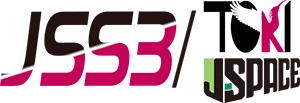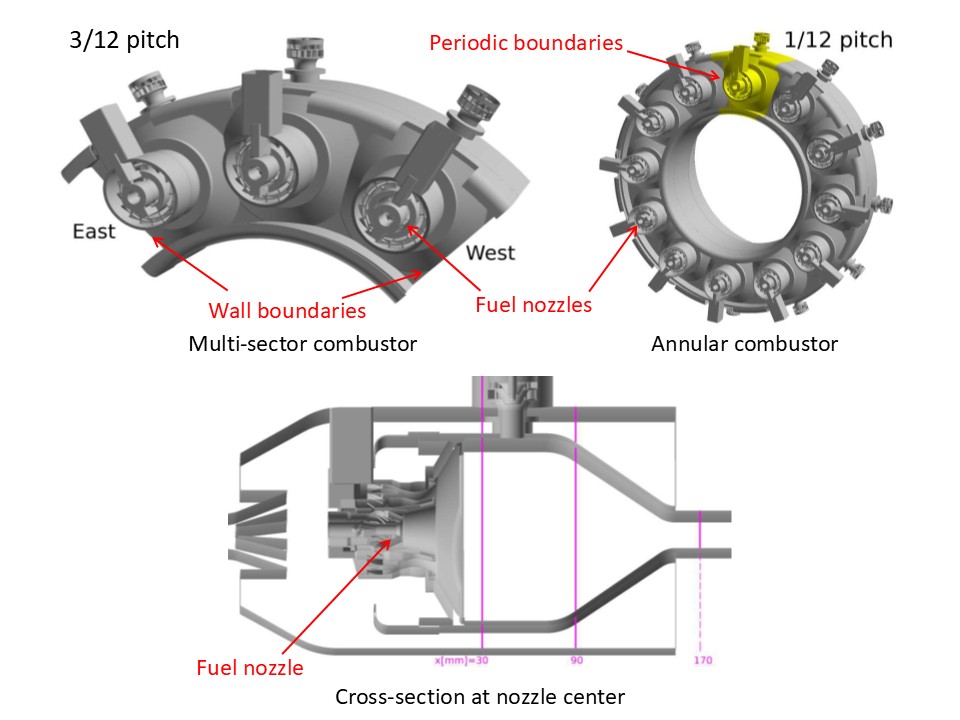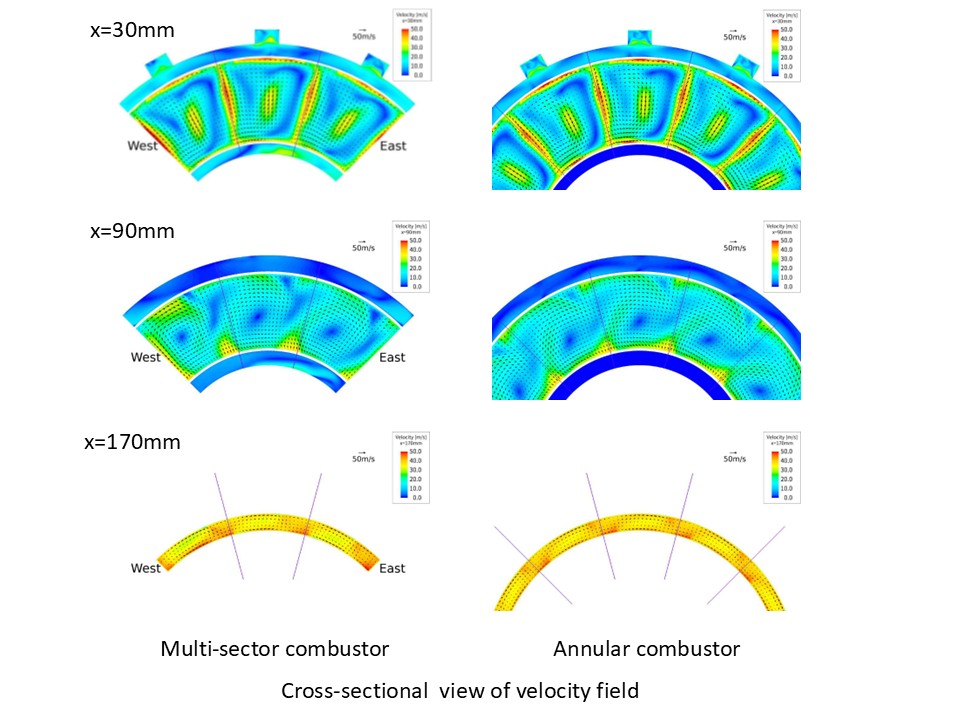Investigation of internal flow of aircraft combustor for En-Core Project
JAXA Supercomputer System Annual Report February 2024-January 2025
Report Number: R24EA0714
Subject Category: Aeronautical Technology
- Responsible Representative: Mitsumasa Makida(JAXA, Aeronautical Technology Directorate)
- Contact Information: Mitsumasa Makida(JAXA, Aeronautical Technology Directorate)(makida.mitsumasa@jaxa.jp)
- Members: Takashi Ishiyama, Mitsumasa Makida, Naoki Nakamura
Abstract
In the development process of aircraft combustors, air mass flow distribution between fuel nozzles, dilution and cooling air holes on the liner effects performances of combustors. So it is important to understand the internal flow and estimate the mass flow distribution. In this research, we conduct cold-flow simulations of internal flow inside the combustor which faithfully simulates the configuration of practical combustor. Then we aim to develop methods to analyze aerodynamic performance of combustors such as air mass flow distribution with high accuracy.
Reference URL
N/A
Reasons and benefits of using JAXA Supercomputer System
It is important to do parametric case study with slightly different geometry, and each case needs large scale simulation. To conduct such simulation effectively, we need the super computer with high parallelization efficiency.
Achievements of the Year
This year, an analysis of non-combustion flow was conducted and compared for both a multi-sector combustor (comprising three sectors) and an annular combustor. The overall appearance and cross-sectional views of each combustor are shown in Fig.1. In combustion testing, trials and improvements were initially performed using the multi-sector combustor, followed by testing with the annular combustor. At the numerical analysis stage, predictions regarding the differences caused by variations in shape were made, along with investigations into the causes of discrepancies in test results. In calculations, the multi-sector combustor had wall boundaries on both sides of the three sectors, whereas the annular combustor had periodic boundaries on both sides of a single sector. As an example of the results, Fig.2 illustrates differences in velocity fields in the transverse section along the flow direction, revealing that as the flow proceeds downstream, the differences due to the presence or absence of wall boundaries become more pronounced.
Publications
N/A
Usage of JSS
Computational Information
- Process Parallelization Methods: MPI
- Thread Parallelization Methods: Automatic Parallelization
- Number of Processes: 1536
- Elapsed Time per Case: 178 Hour(s)
JSS3 Resources Used
Fraction of Usage in Total Resources*1(%): 0.08
Details
Please refer to System Configuration of JSS3 for the system configuration and major specifications of JSS3.
| System Name | CPU Resources Used(Core x Hours) | Fraction of Usage*2(%) |
|---|---|---|
| TOKI-SORA | 395922.56 | 0.02 |
| TOKI-ST | 207904.11 | 0.21 |
| TOKI-GP | 0.00 | 0.00 |
| TOKI-XM | 0.00 | 0.00 |
| TOKI-LM | 297.61 | 0.02 |
| TOKI-TST | 0.00 | 0.00 |
| TOKI-TGP | 0.00 | 0.00 |
| TOKI-TLM | 0.00 | 0.00 |
| File System Name | Storage Assigned(GiB) | Fraction of Usage*2(%) |
|---|---|---|
| /home | 61.71 | 0.04 |
| /data and /data2 | 8320.95 | 0.04 |
| /ssd | 0.00 | 0.00 |
| Archiver Name | Storage Used(TiB) | Fraction of Usage*2(%) |
|---|---|---|
| J-SPACE | 3.45 | 0.01 |
*1: Fraction of Usage in Total Resources: Weighted average of three resource types (Computing, File System, and Archiver).
*2: Fraction of Usage:Percentage of usage relative to each resource used in one year.
ISV Software Licenses Used
| ISV Software Licenses Used(Hours) | Fraction of Usage*2(%) | |
|---|---|---|
| ISV Software Licenses(Total) | 6066.28 | 4.14 |
*2: Fraction of Usage:Percentage of usage relative to each resource used in one year.
JAXA Supercomputer System Annual Report February 2024-January 2025




